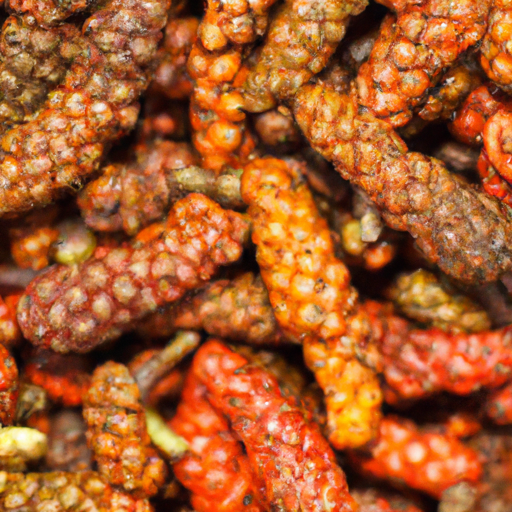Discovering the Flavorful Magic of Arisithippili
Have you ever heard of arisithippili? This remarkable spice may be lesser known outside its native regions, but it carries a wealth of tastes and health benefits that are worth exploring. If you’re looking to add a unique twist to your culinary adventures, arisithippili might just be the missing ingredient you’ve been searching for.
Unveiling Arisithippili
Arisithippili, also known as long pepper or pippali, is a close cousin of the commonly used black pepper. What sets it apart is its long, cylindrical shape and distinctive flavor profile. The word “arisithippili” itself translates to “root pepper” in some languages, reflecting the appearance of the spice.
Taste and Aroma
Once you get a taste of arisithippili, you’ll be captivated by its intriguing spiciness and subtle sweetness. It offers a complex bouquet of flavors, featuring undertones of cinnamon, nutmeg, and cloves. This unique combination makes it a perfect ingredient for enhancing both sweet and savory dishes, enlivening your taste buds with delightful surprises.
Culinary Uses
In the culinary world, arisithippili finds its way into a wide range of recipes, adding a touch of culinary excitement. It is commonly used in Indian, Southeast Asian, and Middle Eastern cuisines, bringing its distinctive flavor to the table. Here are a few popular uses for arisithippili:
1. Indian Curries: Arisithippili is a staple spice in Indian curries. Its pleasant heat and slightly sweet notes complement the robust flavors of the curry, elevating the overall taste and enhancing the complexity.
2. Pickles and Chutneys: The addition of arisithippili to pickles and chutneys can awaken the taste buds, introducing a zesty twist to these condiments.
3. Baked Goods: Embrace the versatility of arisithippili by incorporating it into baked goods. Think spiced bread, cookies, and even sweet pastries. It imparts a warm and aromatic flavor that pleasantly surprises with every bite.
Nutritional Value
Beyond its captivating taste, arisithippili also offers notable health benefits. It is rich in volatile oils, which possess anti-inflammatory and antimicrobial properties. The consumption of arisithippili has been associated with several potential health benefits, including improved digestion, boosted immune function, and respiratory support.
History and Fun Facts
Arisithippili has a rich history dating back thousands of years. It was widely used in ancient Ayurvedic medicine for its therapeutic properties and as a digestive aid. Additionally, in traditional medicine, arisithippili was renowned as an aphrodisiac and was believed to enhance overall vitality.
Interestingly, arisithippili’s popularity waned in Western cuisine over time but remained prominent in the East. However, in recent years, it has regained attention worldwide, catching the interest of adventurous food enthusiasts and innovative chefs.
Conclusion
Arisithippili, with its alluring flavor, numerous culinary applications, and potential health benefits, deserves a place in any chef’s spice cabinet. Whether you seek to create exotic curries, add a twist to your baked goods, or simply explore new flavor dimensions, this hidden gem holds the key.
Set sail on a journey of taste exploration and embrace the delights arisithippili has to offer. Your palate will thank you for it, and your meals will reach new heights of deliciousness. So why not embark on this culinary adventure and unlock the flavorful magic of arisithippili?
Arisithippili
- Arisithippili, also known as long pepper or Indian long pepper, is a flowering vine native to India.
- It is closely related to black pepper and has a similar taste profile, but it is milder and considered less spicy.
- The fruit of the arisithippili plant is harvested when it is still unripe and dried to a brownish-black color.
- This spice has been used in Ayurvedic medicine for centuries due to its medicinal properties and is also valued for its culinary uses.
- In Indian cuisine, arisithippili is commonly used in pickles, chutneys, and spice blends.
- It is often included in spice mixtures like garam masala, which is used to flavor various dishes.
- Arisithippili has a warm, pungent, and slightly sweet flavor with hints of cinnamon and nutmeg.
- It contains an alkaloid called piperine, which is responsible for its unique taste and potential health benefits.
- Piperine has been studied for its potential antioxidant, anti-inflammatory, and antimicrobial properties.
- It is also believed to aid digestion and stimulate appetite.
- Arisithippili is a good source of minerals like iron, potassium, and manganese.
- It is also rich in vitamins C and K, as well as dietary fiber.
- Historically, arisithippili had significant cultural and historical significance. It was traded along the ancient spice routes and was highly valued by Europeans during the Middle Ages.
- It was even mentioned in ancient Greek and Roman texts, highlighting its importance in the culinary and medicinal world.
- Today, arisithippili can be found in various forms, such as whole dried berries, powder, or oil, and is enjoyed in both traditional and modern cuisines around the world.




Use the share button below if you liked it.
It makes me smile, when I see it.